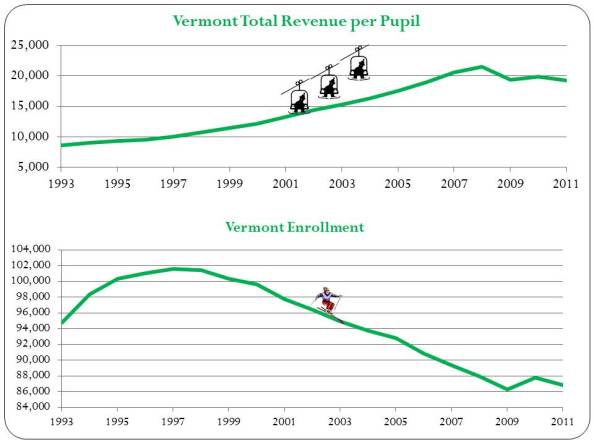Uncommon Denominators: Understanding “Per Pupil” Spending
Posted on April 30, 2014
0

This post is another in my series on data issues in education policy. The point of this post is to encourage readers of education policy research to pay closer attention to the fact that any measure of “per pupil spending” contains two parts – a measure of “spending” in the numerator and a measure of “pupils” in the denominator.
Put simply, both measures matter, and matching the right numerator to the right denominator matters.
Below are a few illustrations of why it’s important to pay attention to both the numerator and denominator when considering both variations across settings in education spending or variations over time in education spending.
Declining Enrollment Growth and Exploding Spending!
First it is important to understand that when the ratio of spending to pupils is growing over time, that growth may be a function of either or both, increasing expenditures in the numerator or declining pupils in the denominator. Usually, both parts are moving simultaneously, making interpretation more difficult. The State of Vermont over the past 20 years makes a fun example.
Vermont is among the highest per pupil spending states in the nation, and Vermont’s per pupil spending has continued to grow at a relatively fast pace over the past 20 years. Figure 1 shows Uncommon Denominators: Understanding “Per Pupil” Spending | School Finance 101:
